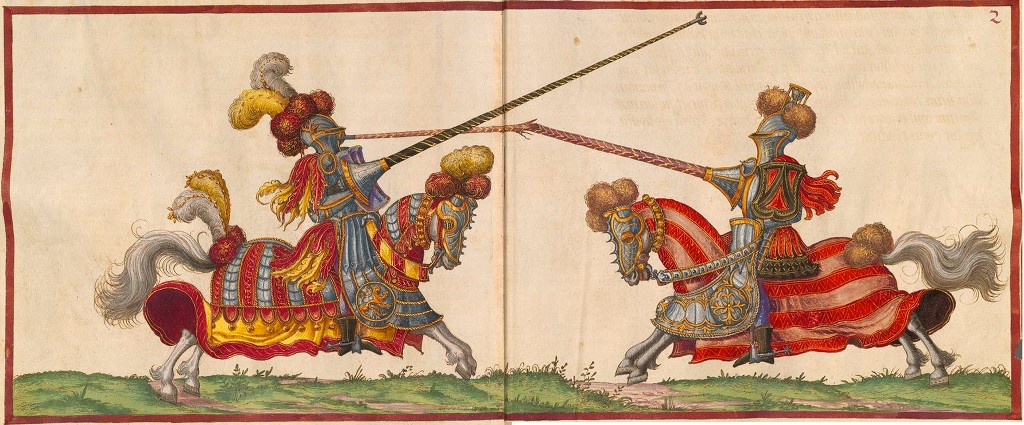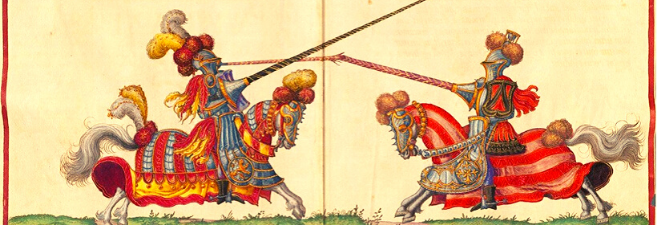![]() There I was I was minding my own business drinking an early morning cuppa in isolation, socially distanced and hunkered when there was a flash of lightning and a tremendous thunderclap right overhead. Just one, followed a quick pelt of rain.
There I was I was minding my own business drinking an early morning cuppa in isolation, socially distanced and hunkered when there was a flash of lightning and a tremendous thunderclap right overhead. Just one, followed a quick pelt of rain.
And because I was deep in The Black Death – the way one is in the novelty phase of a pandemic – my medieval mind went immediately to what this single burst might presage. Was it a message? Was some deity angry with someone? Was it me?
If so what had I done? Failed to wash my hands? Touched my face? Had an evil and uncharitable thought about the occupant of the White House?
And I was just reading the bit where a contemporary chronicler – Henry Knighton – was explaining the terrible phenomenon of cross-dressing women who – by implication – may have been one of the causes of the great plague that swept across Europe – the Black Death of 1348.
Knighton was the canon at the abbey of St Mary of the Meadows, Leicester and knew with authority that God punished sin in dramatic and devastating ways. Apocalyptic divine retribution was to be expected when people transgressed. God’s marvelous remedy for sin was a disease that wiped out over half of the population of Europe in the years 1346-53.
Consider, for example, Knighton’s account of the wanton, eye-catching women dressed in men’s clothes of striking richness and variety who had slipped the traces of matrimonial restraint. They paraded on fine chargers and other well-arrayed horses, and consumed and spent their substance, and wantonly and with disgraceful lubricity displayed their bodies,
Fortunately the Almighty had a marvelous remedy and he visited cloudbursts, and thunder and flashing lightning, and tempests of astonishing violence upon them. Here’s the full account:
A tale of women at tournaments
In those days a rumor arose and great excitement amongst the people because, when tournaments were held, at almost every place a troop of ladies would appear, as though they were a company of players, dressed in men’s clothes of striking richness and variety, to the number of forty or sometimes fifty such damsels, all very eye-catching and beautiful, though hardly of the kingdom’s better sort. They were dressed in parti-colored tunics, of one color on one side and a different one on the other, with short hoods, and liripipes wound about their heads like strings, with belts of gold and silver clasped about them, and even with the kind of knives commonly called daggers slung low across their bellies, in pouches. And thus they paraded themselves at tournaments on fine chargers and other well-arrayed horses, and consumed and spent their substance, and wantonly and with disgraceful lubricity displayed their bodies, as the rumor ran.
And thus, neither fearing God nor abashed by the voice of popular outrage, they slipped the traces of matrimonial restraint. Nor did those whom they accompanied consider what grace and outstanding blessings God, the fount of all good things, had bestowed upon English knighthood in all its successful encounters with its enemies, and what exceptional triumphs of victory He had allowed them everywhere. But God in this as in all things had a marvelous remedy to dispel their wantonness, for at the times and places appointed for those vanities He visited cloudbursts, and thunder and flashing lightning, and tempests of astonishing violence upon them. – Knighton, Henry. 1995. Knighton’s Chronicle 1337-1396. Edited and translated by G.H. Martin
Cultural anxiety about gender roles and transgressive behavior – still with us – has a long history.
Knighton’s wanton women were committing some of the very crimes for which Joan of Arc was burned at the stake. Her clothing was a big feature at her trial. These phrases appear in the Articles drawn up against her:
… Jeanne, rejecting and abandoning women’s clothing, her hair cut en-round like a young coxcomb, took shirt, breeches, doublet, with hose joined together and fastened to the said doublet by twenty points, long leggings laced on the outside, a short mantle [surcoat] to the knees, or thereabouts, close-cut cap, tight-fitting boots or buskins, long spurs, sword, dagger, breastplate, lance and other arms in fashion of a man of war
… prohibited by the Divine Law, things abominable to God and man, interdicted on pain of anathema by ecclesiastical censure, such as dressing herself in the garments of a man, short, tight, dissolute, those underneath as well as above. … and not only did she wear short tunics, but she dressed herself in tabards, and garments open at both sides; and it is notorious that she was taken prisoner in a loose cloak of cloth-of-gold. She was always seen with a cap on her head, her hair cut short and a-round in the style of a man. In one word, putting aside the modesty of her sex, she acted not only against all feminine decency, but even against the reserve which men of good morals, wearing ornaments and garments which only profligate men are accustomed to use, and going so far as to carry arms of offense. – St Joan of Arc’s Trials
Transgressive behavior was an abomination and had to be punished by human hand or if necessary by the wrath of God. And so it was.

And Knighton’s shock-horror story reminded me of the line in the 1974 soft-porn spoof movie Flesh Gordon. In the film, Flesh Gordon and Dale Ardor join Dr. Flexi Jerkoff in an attempt to save the earth from Sex Rays sent by Planet Porno’s insane emperor, Wang the Perverted.
Dr. Flexi Jerkoff : [to Flesh, looking at Little Nelly and her lesbian warriors] My God, Flesh! They’re dykes!
Flesh Gordon : [Terrified] DYKES?
I never saw the film but a friend did and she would cry out Dykes! in mock Flesh horror every time lesbians hove into view, which in those days seemed quite often.


The edition of The Black Death by Philip Ziegler I’m reading is rather handsome and beautifully illustrated.
It’s the Folio Society edition from 1997 that had been sitting on my shelf unread for more than twenty years. It turns out to be highly readable.
And what makes it compelling is not in the details of the progress of the plague or the medical details – all of which are probably now outdated and scientifically inaccurate – but the disturbing dark trauma of the plague’s impact and its social and cultural repercussions.



Unfortunately, I think there are some people who wished the world was still like this…
And many of them support our dear leader.
Too perfect. Thanks for the laughs.
Oh, my, I’d have loved to meet those wanton hussies.
So brazen! So beautiful! So bold!
Oh dear cant find my liripipes and buskins.
Typical! You probably donated them to the Oxfam Shop in 1973 when you gave up rock-tossing and skittles.
We have sunshine here so I must be dressing incorrectly. Better get washed and don my tabard and hose.
A book I wouldn’t have expected to want to read at this moment, and yet you’ve made a strong case for it. Really enjoyed this post!